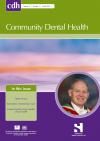Community Dental Health

- Cover Date:
- March 2015
- Print ISSN:
- 0265 539X
- Vol:
- 32
- Issue:
- 1
Socioeconomic inequalities in oral health among adults in Tehran, Iran
© BASCD 2015 doi:10.1922/CDH_3400Ahmady06
Socioeconomic inequalities in oral health among adults in Tehran, Iran
Z. Ghorbani, A. Ebn Ahmady, E. Ghasemi and A. B. Zwi
Objective: To identify the socioeconomic distribution of perceived oral health among adults in Tehran, Iran. Basic research design: A cross-sectional population study. Participants: A stratified random sample of 1,100 adults aged 18–84 years living in Tehran. Methods: Self-report data were obtained from the 2010 dental telephone interview survey. Oral health was evaluated using self-assessed non-replaced extracted teeth (NRET), and a three-item perceived dental health instrument. Socioeconomic status was measured by combining the variables of education and assets using principal component analysis. Inequalities in oral health were examined using prevalence ratios and concentration index. Results: The poorest quintile was 1.60 (95% confidence interval, CI, 1.30;1.98) times as likely to have any NRET compared with the richest quintile, indicating a disparity. Inequality was most pronounced in the 35–59 age group with prevalence ratio 2.01 (95%CI 1.26;3.05). The concentration index of NRET in adults in Tehran was -0.22 (95%CI -0.28;-0.16). No significant differences were found in perceived dental health between socioeconomic classes. Conclusions: Adults from lower socioeconomic classes experienced more disabilities due to missing their teeth, specifically in the middle-age group. Inequalities in perceived dental health were not apparent in the studied population.
Key words: oral health, socioeconomic factors, Iran, NRET
- Article Price
- £15.00
- Institution Article Price
- £
- Page Start
- 26
- Page End
- 31
- Authors
- Z. Ghorbani, A. Ebn Ahmady, E. Ghasemi, A. B. Zwi
Articles from this issue
- Title
- Pg. Start
- Pg. End
- Comparing lifecourse models of social class and adult oral health using the 1958 National Child Development Study
- 20
- 25
- Barriers to providing oral health care to pre-school children– differences between paediatric dentists’ and general dental practitioners’ beliefs
- 32
- 38
- Health economic analyses of domiciliary dental care and care at fixed clinics for elderly nursing home residents in Sweden
- 39
- 43
- Tooth brushing among 11- to 15-year-olds in Denmark: combined effect of social class and migration status.
- 51
- 55
- The incidence and nature of complaints against dentists for the treatment of children in Israel from 1992–2011
- 56
- 59
